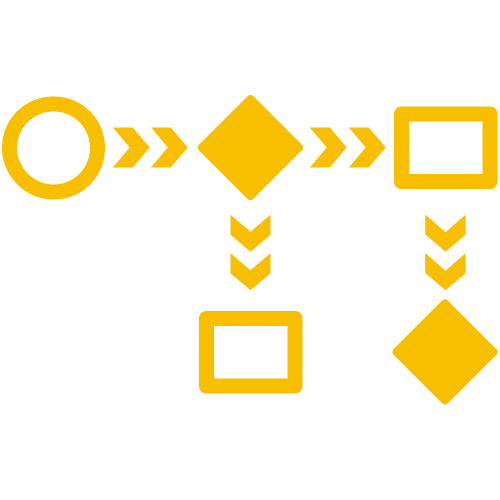3D Simulation Software
Meet your digital workforce
Jack and Jill are the best workers ever. They’re always on time, they never complain, and they’ve been known to put in a 24/7 work week.
You’re right: Jack, Jill, and their elite virtual pals aren’t going to produce any physical products for you. What they can do is accurately mimic your real-world facility, and that can lead to some very valuable information. Wouldn’t it be awesome to answer these important questions without disrupting normal operations?
- Can we do more with what we already have?
- Will this change help as much as we think it will?
- What happens if we shake up the staffing schedule?

I’m sold, let’s put them to work!
Great, we’ll just drag them into your model and… wait, you don’t have a simulation model? I suppose you could model the system yourself using good ol’ fashioned paper and pencil, a coding language, or a spreadsheet (Pk,k+1(h) = λh + o(h), am I right?). This is going to take a lot of time, though—and you’re definitely going to miss out on using Jack and Jill. Not to mention the incredible benefits of simulating with a 3D model:
Your true-to-scale system
Is your facility two-dimensional? I didn’t think so. Any model that doesn’t take spatial relationships into account isn’t going to tell the whole story. We’re ready for you to drop in that CAD drawing and lay out your system in 3D, as nature intended. Well, if nature could provide a drag-and-drop library of rich, detailed objects and resources just waiting for your mouse clicks.
This means less effort when you get to show off your work and communicate your results. FlexSim is even compatible with the Oculus Rift, so you can have a completely immersive experience as you design and present your system.
A model everyone can understand
Data is wonderful, and you can bet FlexSim provides all the charts, graphs, and outputs you’ll ever need. But all those cool numbers and datasets don’t move the needle in a meeting or presentation the same way a life-like view of your system will. You want every stakeholder, client, manager, or whoever to really understand what’s going on and get just as excited about it as you are. To do that, you’re going to need a realistic 3D model that showcases exactly what they’ll see when your proposed changes are made.
But making a 3D model sounds hard…
I’ve got some news for you: making any model will take time. It’s probably the most time-consuming part of a simulation study. Shaving weeks, hours and days off the model building process is probably the greatest benefit simulation software provides (besides solving your actual problem, of course).
We designed FlexSim to be the fastest model building software there is. Spreadsheet applications and coding languages aren’t specifically designed to model a system, so they’ll actually take much longer than a dedicated simulation modeling product. And while there are plenty of quality simulation packages out there, each of them lack some crucial features that can make the difference between a two-week project and a month-long project. Only FlexSim has all of these model building features:

Standard Object Library
Jack, Jill and the rest of these objects behave just like the machines and people found in facilities all over the world. They have pre-built logic and task execution, so you can drag out and create a working model in just minutes.

Drop-Down Lists and Properties
They sound simple, but these are unique in the simulation modeling world. You won’t believe how powerful they are until you give them a try. Simply check a box or choose an option from a list, and your resources will gain the logic and behavior for a wide variety of real-world situations.

Process Flow
Our latest feature, and a real game-changer. When things start to get complex you can map out your logic in this powerful flowcharting tool—no coding required.

Hold on—what exactly is simulation?
If you’re not familiar with simulation and what it can do for your business, check out the video below: